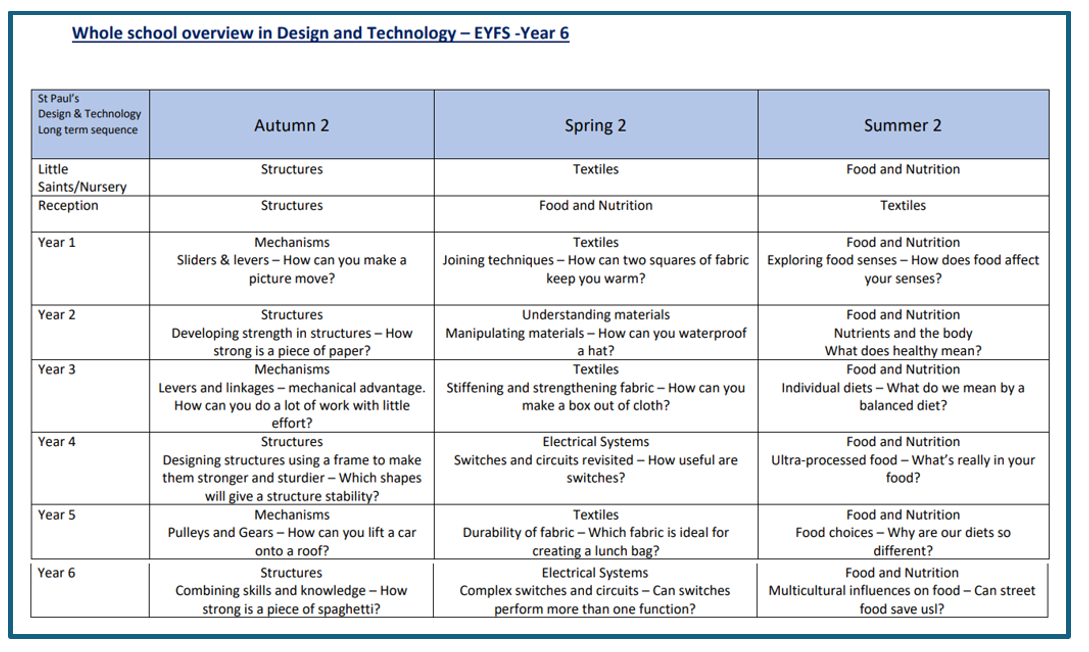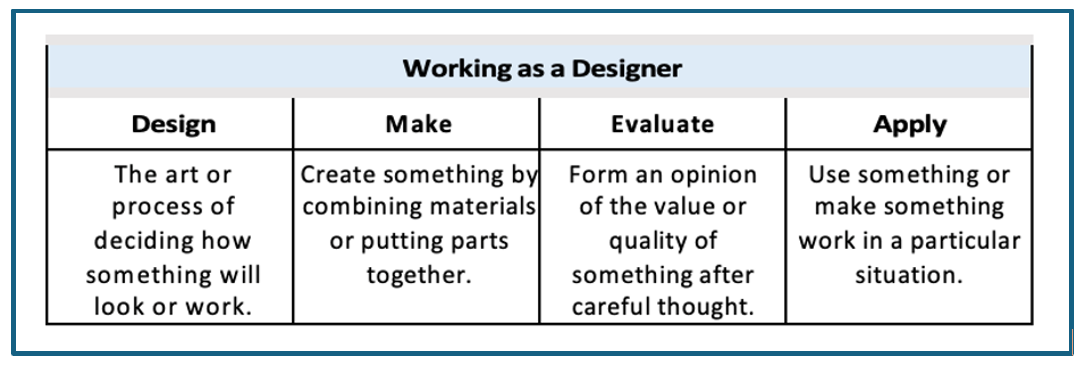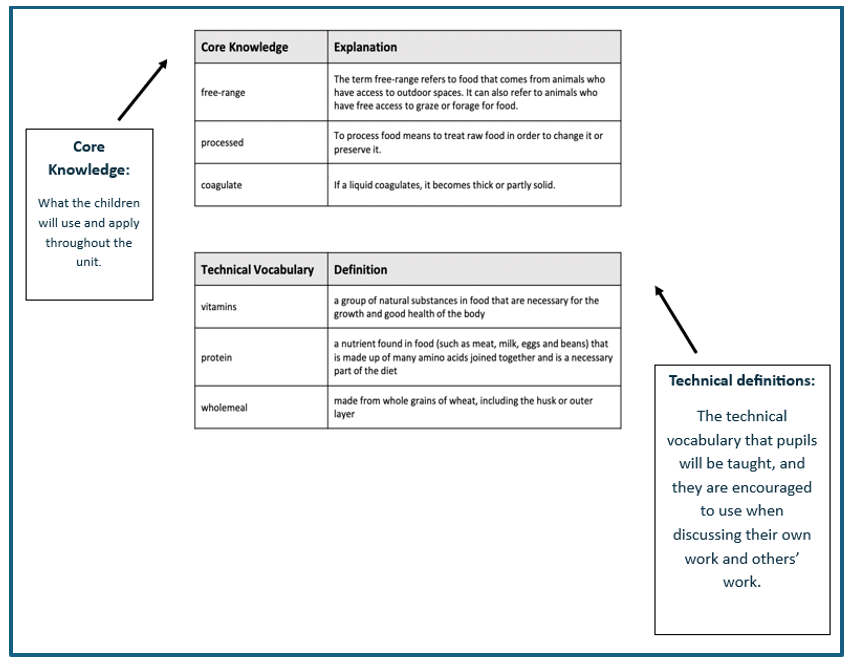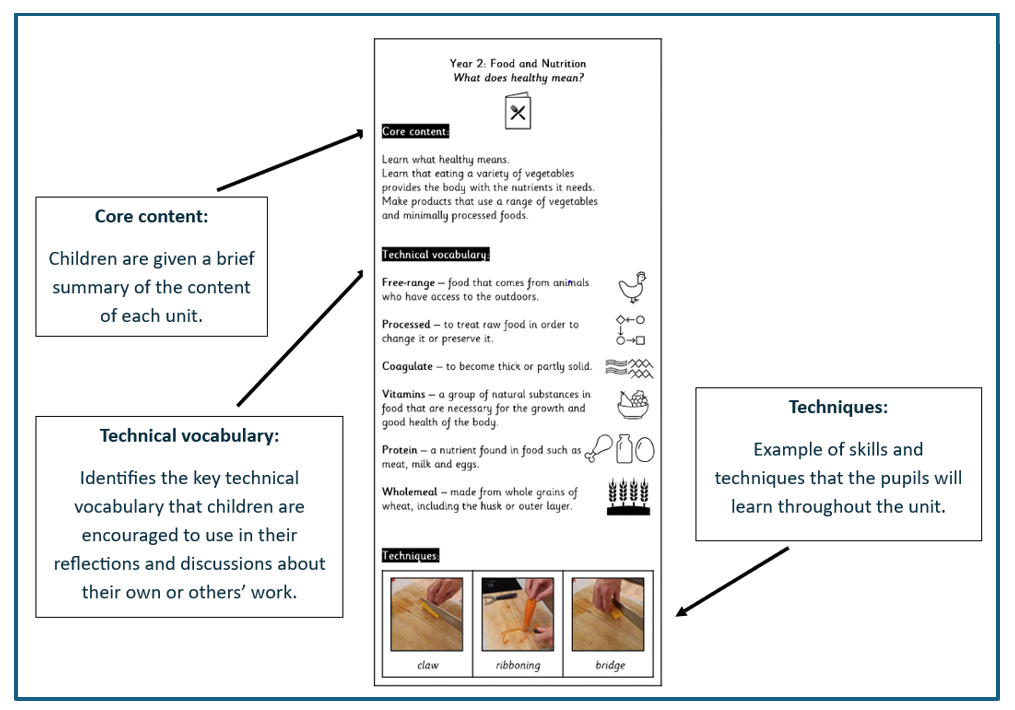Design & Technology
At St. Paul’s, we aim to provide a high-quality Design & Technology education which inspires pupils to use creativity and imagination, when designing and making products. It enables children to solve real and relevant problems within a variety of contexts, through investigation and evaluation techniques.
The Design & Technology curriculum at St. Paul’s is planned around the 6 key elements:
- Food and Nutrition
- Structures
- Mechanisms
- Textiles
- Electrical systems
- Understanding materials
Enquiry begins in the Early Years, as the children begin to explore different materials freely. Our children in Early Years explore different techniques of how to join and connect materials together, while using a range of tools.
In Key Stage 1, children begin to generate, develop, and communicate their ideas, through a range of different units. They begin to learn about the range of techniques required for designing, making, and evaluating and how to experiment with templates and mock-ups. Children in Key Stage 1 have the opportunity to build structures and explore the use of mechanisms including levers, wheels, and axles.
As children move into Key Stage 2, they continue to develop their knowledge, skills and understanding across the 6 key elements. Children are given regular opportunities to experiment and develop their creativity, using a specific design criterion and communicating their ideas through discussion. They will create prototypes, experiment with a wide range of tools and be given opportunities to revisit skills from previous years.

Design and Technology at St. Paul's
Mapping of Key Knowledge
Our Design and Technology curriculum is organised into blocks with each block covering a particular set of disciplines, including:
- food and nutrition
- mechanisms
- structures
- systems
- electrical systems
- understanding materials and textiles
Progression in each discipline has been deliberately woven into the fabric of the curriculum so that pupils revisit key disciplines throughout their Primary journey at increasing degrees of challenge and complexity.
In addition to the core knowledge required to be successful within each discipline, the curriculum outlines key aspects of development in the Working as a Designer section.
Each unit of learning will focus on promoting different aspects of these competencies. This supports teachers in understanding pupils’ progress as designers more broadly, as well as how successfully they are acquiring the taught knowledge and skills.

Vital Vocabulary
Vital vocabulary is identified in each unit of learning, which enables all our pupils to access a range of tier 2 & tier 3 vocabulary.

Knowledge Notes
The use of knowledge notes in Design and Technology, are used to enhance children’s learning as they are encouraged to use the key vocabulary and retrieve techniques throughout the unit.

Retrieval Practice
‘Using your memory, shapes your memory.’ Bjork
Retrieval practice is used in geography as a powerful learning tool. It is used to:
- Support later retention and retrieval
- Identify gaps in knowledge
- Organise knowledge more effectively
- Provide valuable feedback to teachers
- Improve metacognition
- Improve transfer of knowledge to new contexts
Teachers plan into their lesson design, regular opportunities for retrieval practice.






